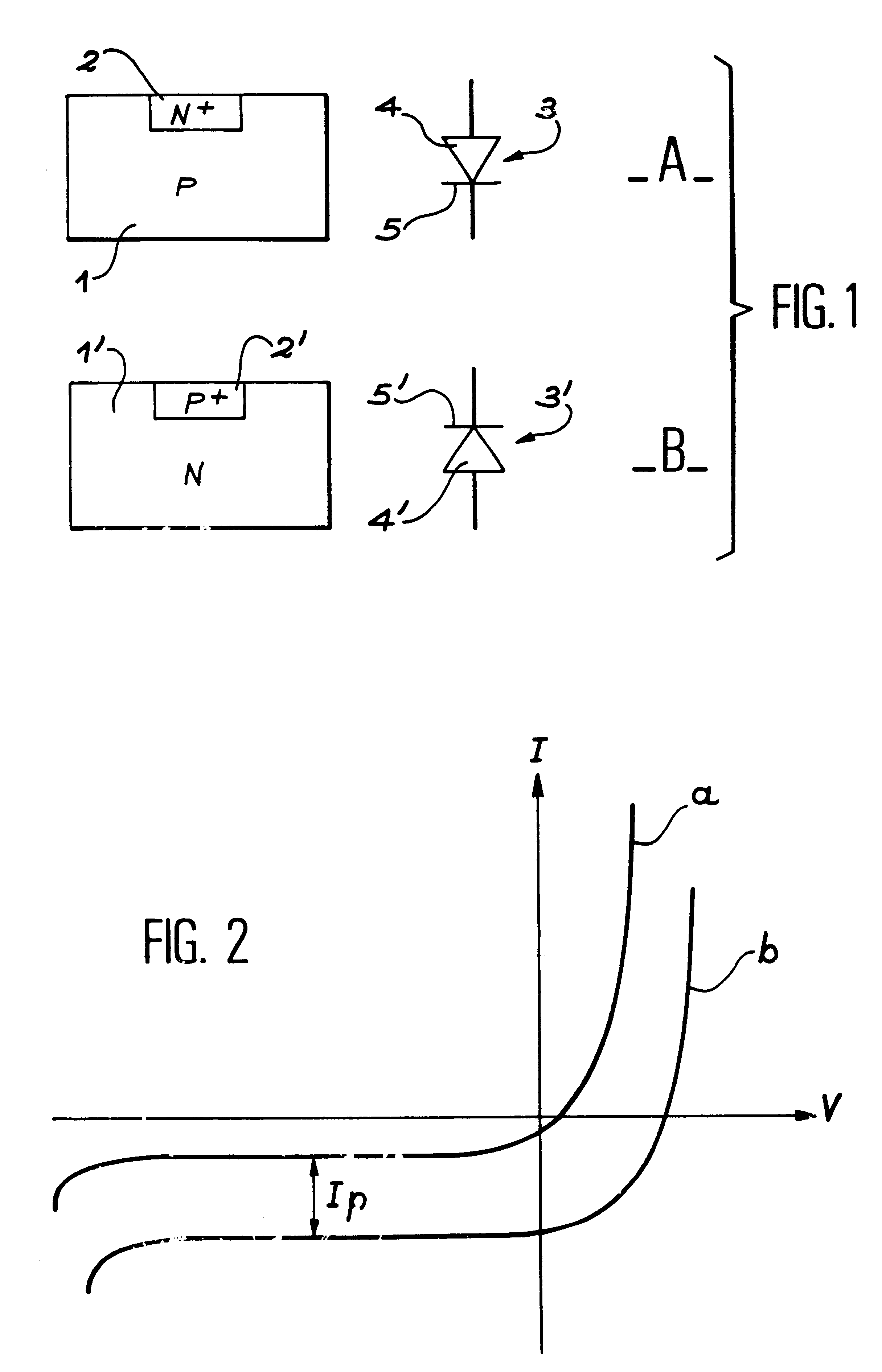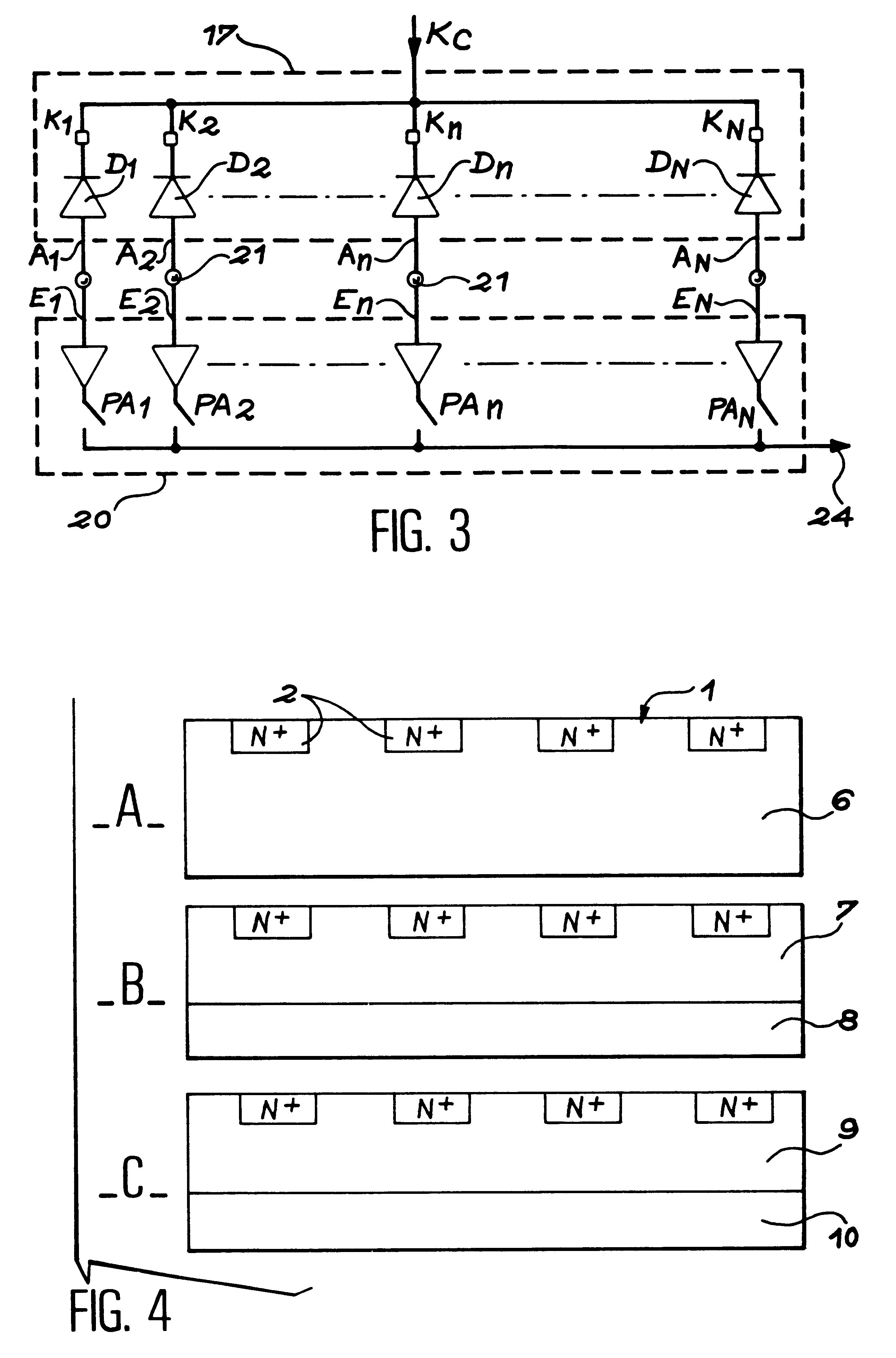Method of biasing the photodiodes of a matrix sensor through associated pixels thereof
a matrix sensor and photodiode technology, applied in the field of method of biasing the photodiodes of a matrix sensor through associated pixels thereof, can solve the problems of inapplicability of the solution represented in fig. 5 and the inability to control the cathodes of each photodiode individually, and the control method has some disadvantages
- Summary
- Abstract
- Description
- Claims
- Application Information
AI Technical Summary
Benefits of technology
Problems solved by technology
Method used
Image
Examples
Embodiment Construction
As it has been seen above, the invention consists in imposing, by control diode anode voltage control, the cathode voltage of each photodiode so as to equalize the apparent impedance of each photodiode among them.
Advantageously, on the detector circuit, diodes will be implanted that can be forward biased and one electrode of which will be permanently coupled to a constant voltage source through the read circuit.
Geometrical implantation modes of such diodes are represented in FIGS. 10 and 11.
FIG. 10 represents the case of a linear strip of photodetectors where all the space required for implanting control diodes is available.
In this case, control diodes 18 can be aligned on a line parallel to the photodiode 19 implantation line. In the example represented in FIG. 10, each control diode 18 is located in alignment with a photodiode 19.
In this case, it is also possible to provide two lines of control diodes located on either side of the photodiode line as represented in FIG. 17 part B, ...
PUM
 Login to View More
Login to View More Abstract
Description
Claims
Application Information
 Login to View More
Login to View More - R&D
- Intellectual Property
- Life Sciences
- Materials
- Tech Scout
- Unparalleled Data Quality
- Higher Quality Content
- 60% Fewer Hallucinations
Browse by: Latest US Patents, China's latest patents, Technical Efficacy Thesaurus, Application Domain, Technology Topic, Popular Technical Reports.
© 2025 PatSnap. All rights reserved.Legal|Privacy policy|Modern Slavery Act Transparency Statement|Sitemap|About US| Contact US: help@patsnap.com



